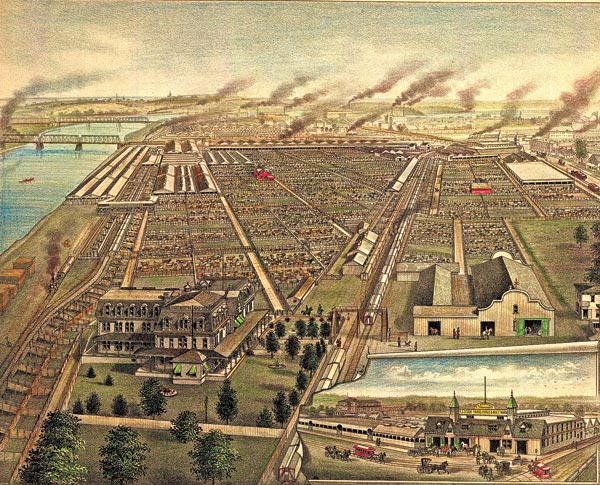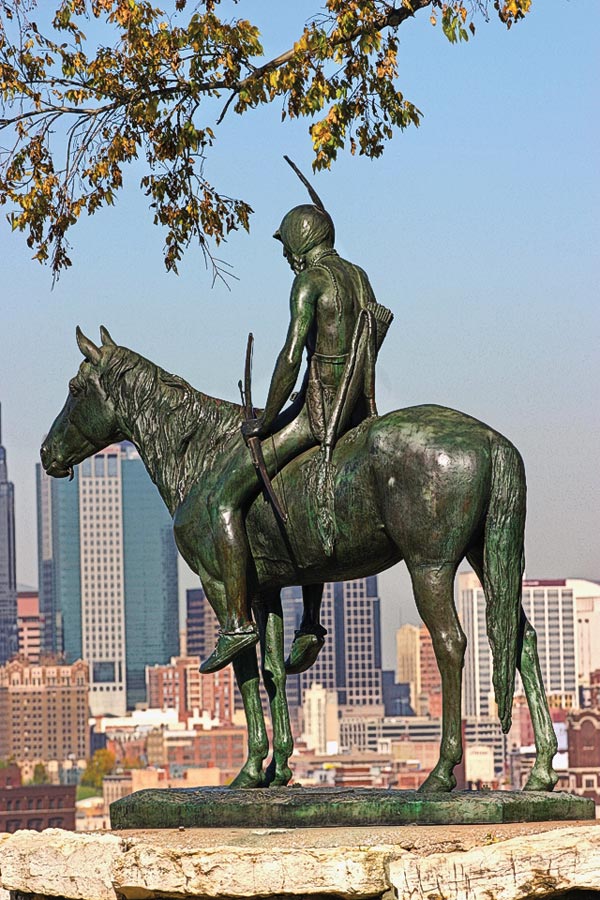
– Courtesy Beinecke Library, Yale University –
History credits Missouri River trader John Calvin McCoy with founding Kansas City in 1838. The story, possibly legend, says he and his partners met to discuss a name for their new township. The list included Rabbitville and Possum Trot.
Though future humorists would’ve been eternally grateful, they rejected those and chose Town of Kansas, after the Kansa Indians. It officially became Kansas City in 1889.
The city today, the Midwest’s sixth largest, has a vibrant history to showcase and does it well. The Battle of Westport Visitor Center and Museum tells of a key 1864 Civil War fight, often called the Gettysburg of the West.

– All Images Courtesy VisitKC.com Unless Otherwise Noted –
Visitors can overlook the battlefield in the Big Blue River Valley and take a self-guided tour past cannon placements and along Rebel wagon trails. Participants included William Cody, serving with the 7th Kansas Volunteer Cavalry. He later became world-famous as Buffalo Bill Cody. James Butler Hickok—Wild Bill—served as a scout for the union commander.
Two living history museums offer fine re-creations of the pioneer experience.
Staffers at Missouri Town 1855 dress in period costumes as they explain farm living on a site with more than 25 buildings, dating from 1820 to 1860. The Shoal Creek Living History Museum has a village made of log cabins and homes relocated from surrounding counties, set on 80 beautiful acres.

The Arabia Steamboat Museum tells of a steamboat that ran into a fallen tree on the Missouri River and sank, Titanic like, in 1856. The river relocated over time, and in the 1980s searchers found the boat a half-mile east—and 45 feet underground.
The story of the Arabia stayed alive because of the legend that it carried Kentucky bourbon. Explorer David Hawley told a reporter that many “searched for the treasure, believing it to have aged to perfection in the oak barrels lost deep in the river mud.”
The steamboat actually carried 200 tons of supplies for Western towns, and the massive haul offers a surprising look at items used on the frontier. These include champagne, French perfumes, 4,000 pairs of shoes and boots, three million Indian trade beads, fabrics, tobacco, matches that still lit, edible fruits and pies, even two prefabricated homes.
Be sure to visit the 1858 John Wornall House. It has 25-foot Greek columns and was used as a field hospital by union and Confederate troops during the Battle of Westport.
The ornate Alexander Majors House, likely built by slaves in 1856, sat along a path leading to the original Santa Fe Trail. A working blacksmith shop stands on the site, as does an 1850s Conestoga wagon. The plaster walls were made of white lime and hog hair.
In nearby Independence, the National Frontier Trails Museum explains the westward march of Americans in the early- and mid-1850s, on the Santa Fe, Oregon and California trails.

Also in Independence, ten miles away, visit Harry Truman’s home, tour the historic Truman courthouse built in 1838, and the 1859 Jail, Marshal’s Home and Museum. The home’s second floor has a bedroom for the marshal and his wife, two more bedrooms for his 12 children, and six cellblocks, all along the same hallway.
“Tourists are amazed that family and prisoners lived so close together,” says Caitlin Eckard, operations manager for the Jackson County Historical Society. At various times, jail guests included Confederate guerrilla William Quantrill and bank robber Frank James, who read books during a six-month hitch.
Don’t leave Kansas City without trying its famous barbecue, at Jack Stack or Arthur Bryant’s. Bryant proudly described his restaurant as a “grease house,” but writer and Kansas City native Calvin Trillin called it “possibly the single best restaurant in the world.”
Bryant’s secret? Add molasses to the sauce. Soooo good!






